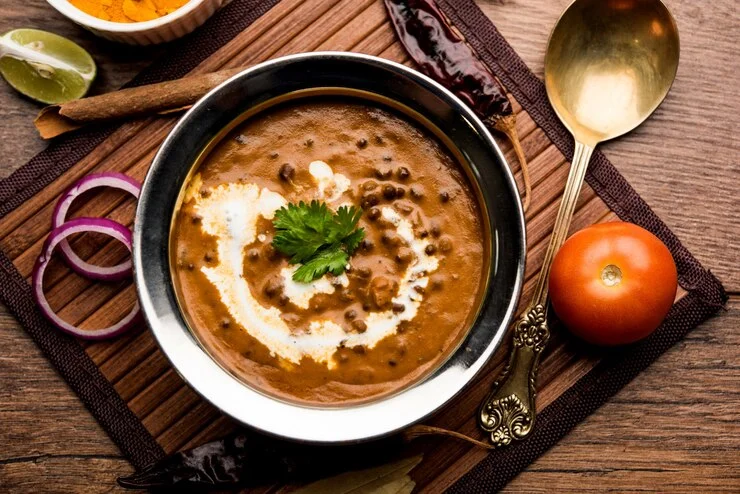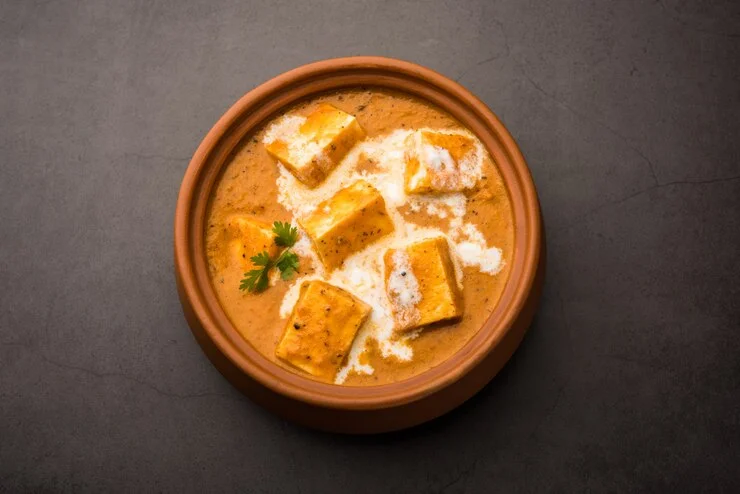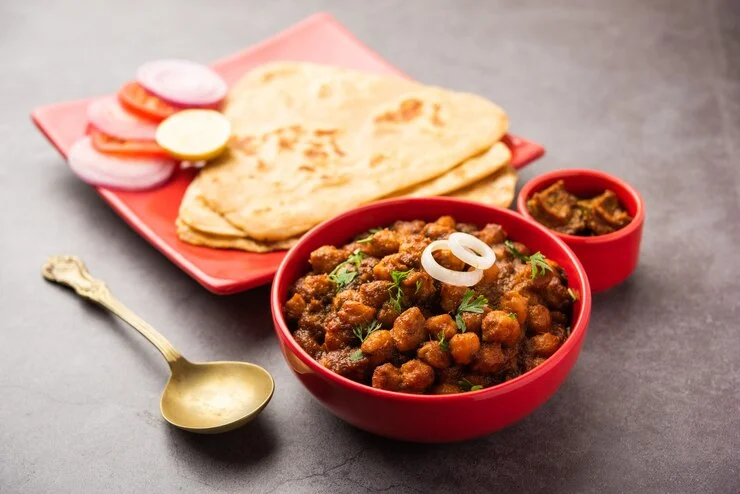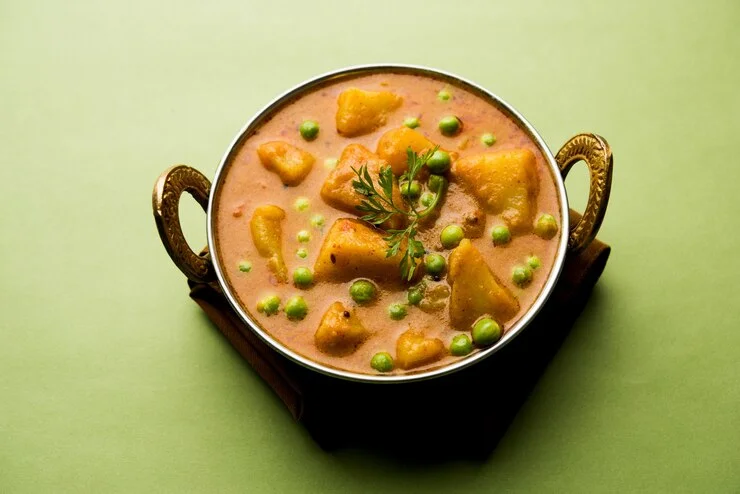Dal Makhani:-
Rich, velvety, rich and smoky, Dal Makhani is a hugely popular North Indian lentil dish made using dark lentils, lots of margarine and mild flavours. Serve it with naan or jeera rice for a wonderful dinner!
About Dal Makhani:-
Dal Makhani is one of the most famous dishes of North Indian cuisine (especially Punjabi) and it actually means rich dal. You’ll find this rich and velvety dal on the menu of every imaginable North Indian café from one side of the planet to the other. It is also included in the menu of dhabas (food joints on the North Indian side of the road) and when served with hard roasted roti or jeera rice, it brings a delicious taste to your mouth.
Dal Makhani is a delicious mixture of whole black lentils (urad), Bengal gram and red kidney beans cooked with lots of margarine, heavy cream and mild relish.
Given the rich ingredients used in making this dal, this is not your ordinary dal dish. Make it for extravagant events or celebrations and serve it with naan or jeera rice for a sumptuous feast.
Generally, Dal Makani was cooked for a very long time on low flame to get extremely smooth surface. But in today’s time when life is so busy, who has that time, right? Still, don’t despair. My method of cooking this dal in a traditional Indian-style pressure cooker or Moment Pot will give you the same result, while perhaps worse.
I usually cook the dal in a strainer cooker or other vessel to save the cycle and then serve it in a vessel over a burner. However, if you want to make it in one-pot, then do check out my One-Pot Moment Pot Dal Makhani post.
Also, if you really want to cook it at a lower intensity, at that point, try my slow cooker dal makhani. It’s a one-pot, dump-and-go recipe and it tastes extraordinary, too. I also have a Jain dal makhani recipe made without onion, ginger or garlic. So let’s say you’re practicing Jainism, focus on that.

Material:-
You will get all the ingredients to make this dish in Indian supermarkets. Some of them are also available online.
Lentils – You will need whole black lentils (black urad, khadi urad), Bengal gram (chana dal), and red kidney beans (rajma).
Adding chana is discretionary yet it makes the dal really rich. Very few people include it in their dal makani recipe but this is one thing that makes my recipe the best!
Tomato Puree – This adds a pleasant spiciness to the cooked dal. Use canned tomato puree instead of custom made tomato puree as it is more concentrated and full of flavor. You can also use tomato gum instead of tomato puree. Just use about 50% of the amount and the gum is much more useful than puree.
Ghee (clarified margarine), spread, and heavy cream – don’t think twice about these ingredients as they add to the flavor and extravagance of this dish.
Other Ingredients – Apart from the ingredients mentioned above, you will also need fresh ginger, ginger garlic gum, onion, ground cumin powder, Kashmiri red stew powder, garam masala powder, kasoori methi and salt.
Instead of red stew powder, you can also use cayenne pepper, paprika, or smoked paprika (surprisingly better).
I sometimes like to add some curd while making dal makhani masala. It gives it a wonderful spiciness and makes the dal creamy. You can also add a little boiled gram flour to it to make it creamy.
Smoky taste – To give this dal a café style smoky taste, I smoke it using coal. If it is not readily available you can use a piece of cinnamon stick in place of coal.
Instructions to make Dal Makhani:-
The initial step in making dal makhani is soaking the dal. Soaking the dal reduces the cooking time and also the dal gets absorbed effectively.
Wash ½ cup whole urad dal, 1 tbsp chana dal, and ¼ cup red kidney beans (rajma) with water and soak them together or independently in 3-4 cups of water for 8-10 hours or short period.
cook lentils
The next step is to cook the dal. You can cook these in a traditional Indian strain cooker or a moment pot. I would not recommend cooking them on the burner in the same mindset as cooking them in a pot requires too much investment which is a wasteful exercise.
cooking lentils in an instant pot
Wash the peeled lentils once again and filter them thoroughly.
Add them to another vessel along with 2 tbsp ghee, 2 tsp ginger garlic gum, 1 tsp Kashmiri red stew powder, ½ tsp cumin powder and 2 tsp salt.
Add 3 cups of water and close the lid.
Press Strain Cook and set the clock on high tension for 25 minutes. The moment pot will set aside some margin to build tension and start the clock. When the clock stops, allow the tension to dissipate normally for 10 minutes. Physically release any remaining tension by moving the vent to the vent position. Use a spoon to remove the vent to prevent steam from escaping from the fingers.
Open the top and grind the dal with the back of a spoon until it becomes velvety. put away.
Wash the peeled lentils and filter them well.
Put them in a strainer cooker along with 2 tbsp ghee, 2 tsp ginger garlic gum, 1 tsp Kashmiri red stew powder, ½ tsp cumin powder and 2 tsp salt.
Add 4 cups of water and close the top.
Pressure cook on high intensity till 1 whistle. Then reduce its intensity and cook for 25 minutes.
Remove the pressure of the cooker and allow the strain to release normally. Then, at that time, open the lid.
Grind the dal with the back of a spoon or a potato masher until it becomes smooth. put away.
treatment of cooked lentils
When the dal is cooked then how to add tadka to it.
Heat 2 tablespoons ghee in a pan on high flame.
While the ghee is heating, gently grind 2 green cardamoms, 2 black cardamoms, 2 inch cinnamon sticks, 3-4 cloves and 3-4 whole black peppers in a mortar and pestle.
When the ghee is hot, add crushed whole chillies, 2 taro leaves and 2-3 dry red chillies to the pan and let them crackle for 4-5 seconds.
Add 1 cup crushed onions and sauté until they are nicely browned (8-10 minutes).
Add 6 tablespoons tomato puree in the pan and fry for 2-3 minutes.
Now add 1 teaspoon ground ginger and 1 teaspoon garam masala powder and cook for additional 2 minutes.
Add cooked and crushed lentils to the pan. Reduce intensity and cook for 20-25 minutes. Continue mixing for the normal period. If the dal is too thick then add some water and heat till it boils.
Add 2 tbsp spread and ¼ cup heavy cream and cook for 2 minutes. Check the salt.
Add 1 tbsp crushed kasoori methi and cook for another minute.
Garnish with heavy cream swirls and chopped cilantro and serve!
Cafe Style Paneer Spread Masala (Paneer Makhani):-
Paneer Margarine Masala (Paneer Makhani, Spread Paneer) is a rich and smooth paneer curry where paneer 3D squares (Indian curd) are cooked in onion tomato sauce. It is one of the most famous Indian curries served in restaurants around the world. Learn how to make the best food style cheese margarine masala at home using my simple and basic recipe
About Paneer Margarine Masala (Paneer Makhani):-
Paneer Margarine Masala (Paneer Makhani, Spread Paneer) is one of the most famous North Indian curries where fresh and delicate paneer (Indian curd) 3D squares are cooked in a velvety, rich and plush tomato onion sauce. It is something sweet, hot and exceptionally delicious.
You’ll find this curry on the menu of practically every North Indian café in India and around the world. Now you can make edible paneer spread masala at home using my simple and easy recipe.
This recipe uses storeroom staples like spread, heavy cream, whole relish, onions, tomatoes, cashews, etc., and is completed in less than 30 minutes.
Paneer Makhani is best served with margarine naan, garlic naan, roasted roti or jeera rice. When I make it for my usual feasts, I serve it with hot phulka with some ghee.
This Paneer Margarine Masala recipe is vegan and gluten free. You can of course double or triple the recipe.

Material:-
Paneer – Paneer is easily available in Indian supermarkets. I’ve also seen it at Costco and some Whole Foods varieties outlets.
You can choose between fresh, bundled or frozen cheese.
Keep washing the cheese pieces continuously after removing them from the bundle. It has a dirty layer, which can alter the taste of the dish if not washed thoroughly.
If the paneer is old and has become hard then boil it in water for 2-3 minutes. Drain the water and use the paneer later. A basic stunt brings old chewed cheese mysteriously back to life.
Assuming you are using frozen cheese, defrost it on the kitchen counter until it comes to room temperature. – Cut it into solid shapes and soak it in hot water for 20 minutes. Channel and usage.
Margarine and Oil – To make this Paneer Makhani recipe, you will need spread and cooking oil. Oil is added so that the margarine does not run out during cooking. You can use either salted margarine or unsalted margarine. In case of using salty margarine, reduce the salt in the curry.
Wholesome Flavor – The addition of wholesome flavors like cloves, green cardamom, and black cardamom adds a very pleasant flavor to this curry. Try not to skip.
Zest Powder – Flavor powders like coriander powder, turmeric powder, Kashmiri red bean stew powder and garam masala powder are added to upgrade the taste of this margarine cheese sauce.
Tomato Puree and Ketchup – Locally sourced tomato puree (or tomato gum) and ketchup are an undisputed necessity to make this recipe. Since they are significantly more concentrated than the originally manufactured ones, they give the dish an extraordinary trademark restaurant-like flavor.
Cashew – It adds a rich flavor and velvety surface to the sauce. You can also use white almonds instead of cashews.
Heavy Cream – Unsweetened heavy cream adds rich flavor and texture to the curry.
Others – You will also need red onion, young tomatoes, ginger, garlic and green chillies.
Be careful to choose the ripest tomatoes as they add flavor and variety to the final dish.
Remember to add honey to adjust the taste. Kasuri methi (dried fenugreek leaves) is also essential.
I used Indian green chilies, although you can use serrano chilies, Thai green chilies, or jalapeno peppers.
The most effective method of making Paneer Spread Masala:-
Heat 1 tablespoon spread (salted or unsalted) and 1 tablespoon cooking oil in a large skillet over medium-high heat.
When spread is hot, add
2-3 cloves
1 whole black cardamom
2-3 whole green cardamoms
What’s more, fry for 3-4 seconds.
Add ¼ cup chopped onions and cook for 2-3 minutes or until they become clear, stirring frequently.
1 cup chopped fresh tomatoes
1 inch piece of young ginger (chopped)
5-6 cloves of garlic (peeled and chopped)
2 green chillies (half cut)
Also, cook for 2-3 minutes until the tomatoes become soft. Keep mixing as usual.
Now add 20-25 whole cashews in the pan and cook for one more minute.
Remove the pan from heat and allow the mixture to cool completely.
Pour the cooled mixture into a blender with ¼ cup water and blend to make a smooth paste.
Heat the additional 3 tablespoons in a similar skillet over medium heat.
Add ground gum to the pan.
2 teaspoon coriander powder
½ tsp turmeric powder
2 teaspoons Kashmiri red stew powder
¼ cup tomato puree (or 2 tablespoons tomato paste)
2 tbsp ketchup
1 teaspoon salt
Further, mix until thick.
Cut 1 pound (500 grams) of cheese into 1/2-inch 3D shapes and add them to the pan. Stir to coat the 3D squares with sauce and cook for 3-4 minutes.
If the sauce is too thick, add a little water.
½ tsp garam masala zest blend
¼ cup unsweetened heavy cream
2 teaspoon honey
2 tbsp Kasoori Methi.
Cook for a moment more.
Check the salt and add more salt whenever required.
Transfer the curry to a serving bowl. Garnish with heavy cream swirls and serve hot.
Amritsari Chole:-
Amritsari Chole with freshly made delicate kulchas has been my favorite dish. This delicious chickpea curry has a nice blend of traditional Indian flavors and tastes making it a perfect curry to serve with Indian roti of your choice. So what would you say you’re waiting for? This is the traditional way of making it.
About Amritsari Chole:-
Amritsari Chole is a traditional recipe from Amritsar made using freshly ground Chole masala.
Newly ground spices in curry usually make it better and tastier.
The foundation of the curry is tomatoes and onions which are enhanced with freshly ground spices and other regular flavors.
All things considered, let’s say you are wondering how can I get bland variety in curry, then, at that point, here is the answer to your question.
The color of this curry becomes somewhat cloudy due to the tea pack used while heating the chickpeas.
Generally, dried gooseberry was used to give a medium dark color to the chickpeas, but due to not having such natural access at present, tea bags can be used.
Thus, I suggest you give your standard chole recipe a break and try this Amritsari chole.

Material:-
1 cup chickpea
1 dark tea pack
4 tbsp mustard oil
1 cup onion (finely chopped)
2 teaspoon ginger (finely chopped)
1 cup tomato (chopped)
2 green bean stew (hacked)
½ tsp turmeric powder
2 teaspoons Kashmiri red bean stew powder
salt to taste
2 teaspoons tamarind gum
2 tbsp fresh coriander (chopped)
For chickpea masala
1 and ½ tbsp coriander seeds
½ tbsp cumin
1 tablespoon pomegranate seeds
¼ teaspoon fenugreek seeds
5-6 dry red chillies
4-5 cloves
5-6 black peppers
1 dark cardamom
½ inch cinnamon
Instructions to make Amritsari Chole:-
Wash chickpeas and add 3-4 cups of water and soak for 6-8 hours.
Drain the water and put the gram in a tension cooker with 4 cups of water, the tea bag and 2 teaspoons of salt.
Pressure cook till the gram becomes soft. Remove the intensity of stress and keep it aside.
Cook the ingredients for Chole Masala until they are slightly cooked and fragrant.
Remove the dish vigorously and allow the contents to cool.
Grind the flavors and make a fine powder.
Now add chole masala, turmeric powder and red stew powder and cook for 2-3 minutes.
Add the cooked gram along with the water in which it was boiled. Using the back of a spoon, crush a couple of grams. Change the salt and water. Cook on medium intensity for 10-12 minutes.
Add tamarind gum and mix well. Cook for another 5-6 minutes. Garnish with juliennes of fresh coriander and ginger.
Punjabi Rajma Masala:-
Punjabi Rajma Masala (Indian Red Kidney Bean Curry) is probably one of the most famous curries made in North India. Learn how to make it at home using my simple recipe.
About Punjabi Rajma Masala:-
Punjabi Rajma Masala (Red Kidney Bean Curry) is one of the most famous North Indian curries where rajma (kidney beans) are cooked in a spicy onion tomato based sauce. This is a protein-rich, vegetarian and gluten-free curry.
Like other famous North Indian dishes like Dal Makhani, Chole Masala, Margarine Chicken, or Paneer Masala, this curry is also on the menu of almost all Indian eateries.
A bowl of rajma rice (boiled rice), drizzled with a little ghee, served with masala onions and green chutney, is a sure-fire comfort food you can appreciate on a lazy Sunday.
The Punjabi style curry recipe I am sharing in this post is a family recipe. Like other Indian dishes, every household has its own recipe for making it and to a large extent, with slight variations, it becomes a family recipe that continues from one era to the next.
To make Punjabi Rajma Masala recipe, beans are soaked and later cooked until soft. You can cook them in a pressure cooker or another vessel with a conventional burner. I am sharing two techniques in the post below.
This recipe is vegetarian and gluten free.
You can of course double or triple the recipe. I cooked the kidney beans in my 3-quart Moment Pot (or 3-liter burner pressure cooker). If you are expanding it or increasing it significantly, use a larger Moment Pot or tension cooker. Cooking time will continue as before.

Material:-
Kidney beans – You get lots of varieties of kidney beans, for example, Chitra kidney beans, Jammu kidney beans (Kashmiri kidney beans), and red kidney beans. Although many people say that Kashmiri rajma is great, Chitra rajma is my favorite choice, as it cooks very well and gives the curry a velvety soft finish as soon as you take it in the mouth.
Try to get dry kidney beans that are less than half a year old, as cooking older beans can take a large part of the day.
You can also use canned kidney beans instead of dried beans. The cooking system will become too fast for this situation.
Oil – I like to use mustard oil to make Punjabi Rajma Masala, which adds a nice rustic flavor to the curry. You can use any cooking oil or ghee (clear spread).
Wholesome Flavor – The choice of Indian flavors like cloves, green cardamom, and cinnamon in hot oil adds a pleasant smell and taste to the curry.
You can also add some cumin, bay leaves and black cardamom to enhance the taste.
Zest Powder – To brighten up this authentic Punjabi Rajma recipe, you will need some essential flavor powders, for example, coriander powder, turmeric powder, Kashmiri red bean stew powder, boiled cumin powder, dry mango powder (amchoor), And hot. Spice Powder.
Tomatoes – This recipe uses both chopped fresh tomatoes and canned tomato puree. You can include locally produced puree instead of canned puree, although canned puree is considered good and gives a lovely flavor to the curry.
You can also use tomato gum in place of tomato puree; Just reduce the amount a little.
Others – You will also need red onion, ginger-garlic gum, salt and cilantro (fresh coriander leaves).
Instructions to make Punjabi Rajma Masala:-
Heat 4 tablespoons mustard oil in a container on medium-high intensity.
While the oil is heating, grate the
2 cloves
2 whole green cardamoms
1 inch piece of cinnamon stick
In mortar and pestle.
When the oil is hot, add the crushed whole flavors into the container and let them cook for 5-6 seconds.
Add 1 and 1/2 cups finely chopped red onion and cook, stirring regularly, until light golden brown (8-10 minutes).
Add 2 teaspoons ginger-garlic gum and cook until the onions turn dark brown (8-10 minutes). Mix most of the time while cooking.
Now add ¾ cup finely chopped tomatoes and 3 tablespoons canned tomato puree and cook for some time. Grind the tomatoes with the back of a scoop while cooking.
3 teaspoon coriander powder
1 teaspoon turmeric powder
2 teaspoons Kashmiri red bean stew powder
½ tsp cooked cumin powder
2 teaspoon dry mango powder
½ tsp garam masala powder
What’s more, cook for 10-12 seconds.
Add ½ cup water and cook until oil starts separating on the sides of the container (2-3 minutes).
Now add the cooked rajma along with the water in which it was cooked and reduce the intensity.
Cook for 10-15 minutes. Press one or two kidney beans lightly with the back of a spoon. This step will make the curry really soft.
Add more water and salt as and when required and heat the curry till it boils.
Add 2 tbsp chopped coriander and serve hot.
Aloo Matar Curry:-
Use my simple recipe to make this spicy Punjabi style Aloo Matar Curry (Green Peas Aloo Curry) at home. You can use a pressure cooker or a Moment Pot with a conventional burner.
About Aloo Matar Curry:-
Aloo matar curry means a vegetable dish made of potatoes and green peas. It is an extremely famous North Indian (Punjabi) curry consisting of potatoes and peas cooked in a spicy onion and tomato based sauce.
Every family has its own approach to making this curry. It has many varieties, for example, dhaba style aloo matar or café style aloo matar.
Here, I am sharing a basic homestyle aloo matar recipe that is made in one pot, easy to cook, and can be made in a traditional burner pressure cooker or in a second pot.
I make this recipe in my 3-quart Moment Pot (or 3-liter burner pressure cooker). If scaling up the recipe, use a larger pot or cooker. Cooking time will continue as before.
Serve it with Indian breads like plain tawa paratha, phulka etc. for a delicious dinner.

Material:-
Potatoes – Use any type of potato that is easily available.
Green peas – You can use fresh or frozen green peas. I like to freeze peas in the winter when they are in season, and exceptionally moderately so. Check out my post on the best way to freeze green peas at home and use them all year long.
Tomatoes – I use canned tomato puree, which is more concentrated than custom made. You can also use tomato paste (about 50% of the amount) or hand-prepared tomato puree. If you like thick curry, use chopped young tomatoes instead of puree.
Flavor Powder – You will need coriander powder, turmeric powder, Kashmiri red bean stew powder, salt and garam masala powder.
Oil – You can use any oil to make this vegetable. Sunflower oil, canola oil, light olive oil, mustard oil, or ghee make great ones. Others – You’ll also need onion, fresh ginger, garlic, green chilies, cumin, and cilantro. Along with cumin, whole flavors like cloves, bay leaves, black cardamom etc. can also be added. They give an exquisite, strong and hearty taste. Kasuri methi is also an extraordinary addition.
Instructions to make Aloo Matar Curry:-
Add 4 tbsp oil.
When the oil is hot, add 1 teaspoon cumin seeds and fry for 4-5 seconds.
Add ½ cup chopped onion and cook, stirring regularly, until lightly browned (5-6 minutes).
Add 1 teaspoon ginger-garlic gum and cook until the onion softens well (5-6 minutes). Keep mixing in between.
Now add 2 green chillies (cut into half) and ½ cup canned tomato puree and cook for 2-3 minutes, stirring occasionally.
Add zest powder and cook until oil separates from the sides (2-3 minutes).
2 teaspoon coriander powder
½ tsp turmeric powder
1 teaspoon Kashmiri red bean stew powder
½ tsp garam masala powder
If the masala is dry and has lost flavor then add 2-3 tbsp water.
Now add the above ingredients and mix well.
½ cup green peas
250 grams cubed or wedged potatoes
½ teaspoon salt
1 cup water
Close the vessel at the top and set the valve to the fixing position.
Press Strain Cook and set the clock on High Tension for 4 minutes. The moment pot will have some margin to build tension and start the clock (10-12 minutes).
When the clock stops, allow the tension to dissipate normally for 10 minutes. Then, physically remove the excess tension and open the top of the vessel. Check the salt and add more if necessary.
Add 2 tbsp coriander and mix well. serve hot.



